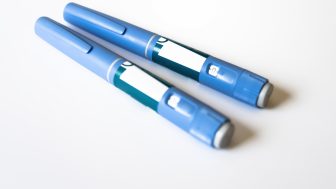Cocaine is a stimulant made from the leaves of the coca plant native to South America.1 Though it is highly addictive, dangerous, and illegal for recreational use, many use it for the high it creates. There are several signs and symptoms of cocaine addiction and its use. If you or a loved one experience symptoms, you should get proper medical attention as soon as possible.
In this article:
- Is Cocaine Addictive?
- Signs and Symptoms of Cocaine Addiction
- Who is at Risk of Cocaine Addiction?
- Cocaine Addiction Treatment
- Aftercare and Ongoing Support
Is Cocaine Addictive?
Simply, yes, cocaine is addictive. Cocaine use increases your dopamine levels, influencing the reward circuit of your brain. Moreover, using cocaine repeatedly is shown to cause long-term changes to this reward circuit.2
In normal conditions, dopamine is recycled; it returns to the cell that released it, which stops certain signals from being sent across brain synapses. However, cocaine prevents this recycling mechanism. Dopamine builds up in the synapses, which compels the brain to seek and repeat the behavior or substance that caused it. The reward circuit eventually accustoms itself to the extra release of dopamine caused by cocaine use. This may start to create a physiological dependence.1,2
Over time and with continued use, the brain becomes less sensitive to cocaine. Thus, the body needs more to replicate its effects. This is referred to as tolerance.1,2,3 Using cocaine for longer periods increases the chance that you will develop a tolerance.1,2 Tolerance and dependence are not themselves addiction, but they greatly increase the likelihood of developing an addiction.
Effects of Cocaine
Some users feed off of the stimulating effects of cocaine, feeling it is necessary to complete tasks quickly. Users may seek specific short-term effects of cocaine, such as mental alertness and energy boosts. However, they do this perhaps unaware that short-term effects also include:1,8
- Irritability
- Hypersensitivity to touch, sound, or light
- Paranoia
- Bizarre, unpredictable, and violent behavioral patterns
Using cocaine can vastly impact your personal wellbeing in negative ways. Some of these negative health impacts include:1,3,8
- Pupil dilation
- Nausea
- Dizziness
- Restlessness
- Convulsions
- Blood vessel constriction
- Tremors and muscle contractions
- Increases in body temperature, pulse rate, and blood pressure
- Irregular or quickened heartbeat
- Cardiac arrests (i.e., heart attacks)
- Strokes
Long-Term Effects and Methods of Cocaine Use
Cocaine has numerous long-term effects, Methods of administration of cocaine include oral (rubbing on gums), intranasal (snorting), inhalation (smoking), or intravenous injections. Injected cocaine is sometimes combined with heroin and is referred to as a speedball.1,3
The long-term effects of cocaine use include:1,2
- Coughing
- Loss of smell
- Asthma
- Nosebleeds
- Problems swallowing
- Respiratory diseases
- Frequently runny nose
- Increased risk for contracting:
- Pneumonia
- HIV
- Hepatitis C
- Other bloodborne diseases
- Skin or soft tissue infections
- Scarring and collapsed veins
- Severe bowel decay from reduced blood flow
- Bleeding within the brain (i.e., intracerebral hemorrhage)
- Decreased cognitive functions
Signs and Symptoms of Cocaine Addiction
When you feel the effects of using cocaine, you may go from a sense of euphoria and mania to unpleasant withdrawal. When withdrawing from it, you may experience the other extreme of feeling low and irritable. Hence, mood swings are usually a regular sign of cocaine addiction.2
Other signs that you or a loved one have been misusing cocaine are:2
- Faster heartbeat
- Erratic behavior
- Dilated pupils
- Loss of appetite
- Sleep pattern changes
- Ignoring hygiene
- Keeping secrets
- Lying
- Hypertension
- Increased body temperature
- More risk-taking behavior
- Paranoia
- Financial problems
- Loss of interest in enjoyable activities
Who is at Risk of Cocaine Addiction?
According to the 2020 National Survey on Drug Use and Health, about 5.2 million people, or 1.9% of 12 or older, reported using cocaine in the past 12 months. Among people aged 12 or older in 2020, about 1.3 million people, or 0.5%, had cocaine addiction in the past 12 months.4
Those who formerly used cocaine are at high risk for relapse, even if they have been abstinent for a long time. Research shows that during periods of abstinence, the memory of using cocaine can trigger strong cravings. Additionally, so can exposure to cues associated with using it. This can lead to relapse.3,4,5
In 2013, cocaine was attributed to almost 6% of all admissions to treatment programs. Of those, 68% smoked crack cocaine and were likely to use multiple mood-altering substances.4,5
Cocaine Addiction Treatment
If you need treatment for cocaine addiction, you should speak to a professional for an assessment. This assessment considers how long you have used cocaine, how much you have used, and your medical history. Based on the assessment, you may be referred to detox, inpatient, or outpatient services.6,7
Cocaine addiction is a complex disorder involving changes in the brain as well as a range of environmental, social, and familial factors. As of this writing, no medication-assisted treatment (MAT) is FDA approved for cocaine addiction.1 If you need to detox, your withdrawal symptoms will be addressed on an as-needed basis as they arise.
You will need additional behavioral and pharmacological treatment. A full continuum of care increases positive treatment outcomes, as does the length of treatment. For example, if you have been using cocaine for several years and only go to detox without continued care, research shows the chance of relapse is high.6,7
Treatment gives you time to learn and practice new behavioral techniques, as well as address the other mental components of addiction. You also are given time to let your body and brain physiologically heal.7
Several evidence-based therapies help treat your cocaine addiction.
Cognitive Behavioral Therapy (CBT)
CBT has been shown to be effective at relapse prevention. CBT teaches you how to adjust your thoughts so they can help you make healthy choices. These new recovery-related behaviors support a substance-free lifestyle.2,6,7
Some programs employ a computerized form of CBT called CBT4CBT. It is an interactive multimedia program that closely follows modules or lessons. You will develop the same skills in this virtual format as you would with an in-person format. Studies have shown favorable results when CBT4CBT is paired with weekly counseling sessions. It increased successful abstinence treatment rates up to 6 months post-treatment. The modules reinforce what is learned in person through virtual homework assignments, quizzes, and games.9
Contingency Management (CM) or Motivational Incentives
Contingency Management is a form of behavioral therapy with positive treatment outcomes. It provides you rewards if you remain substance-free.2
Voucher or prize-based systems are used to reward you if you abstain from cocaine, other mood-altering substances, or partake in recovery-related behaviors. For example, if you have a drug-free urinalysis, you may earn a voucher. After you earn a specific number of vouchers, you can trade them in for a reward such as a gym membership, gift card to a restaurant, or movie tickets.2
CM has been shown to be most effective in helping you achieve abstinence initially and has been useful for treatment retention and motivation. It serves as a motivation for you to not only stay abstinent but to reinforce new, positive, and healthy behaviors.2
This approach is very effective in diverse populations. Pregnant women and women with young children who participated in a CM program as an adjunctive treatment modality stayed abstinent longer than those who received the same number of vouchers with no behavioral requirements. Since the women who participated in CM had to participate and show certain behaviors to earn the vouchers, their abstinences rates were higher.2
Another population CM helped with is people seeking treatment for cocaine use who also had psychiatric symptoms such as hostility, emotional distress, and depression. This population showed a significant reduction in these symptoms that was attributed to reduced cocaine use.2
Therapeutic Communities (TC)
Therapeutic communities are drug-free residences that typically require a 6-12 month stay. Research supports their efficacy because if you stay there, you will be living with people who are also in recovery. The goal of TCs is to help each other understand and change behaviors. Many TCs also provide support with areas of life that might have been affected by your cocaine use. This approach has been shown to improve employment, legal, and mental health outcomes.2,7
 Ozempic-Like Drugs Could Help People Stop Using Drugs and Alcohol
Ozempic-Like Drugs Could Help People Stop Using Drugs and Alcohol
 Gambling, Excessive Drinking–A Destructive Duo, Researchers Find
Gambling, Excessive Drinking–A Destructive Duo, Researchers Find
 Doctors Urge FDA to Pull Genetic Opioid Marker Test Kit from Shelves
Doctors Urge FDA to Pull Genetic Opioid Marker Test Kit from Shelves
 Fentanyl to Play a Pivotal Role in Presidential Election, Pundits Predict
Fentanyl to Play a Pivotal Role in Presidential Election, Pundits Predict
Aftercare and Ongoing Support
Research indicates that if you are committed to abstinence, believe you can refrain from using cocaine, and engage in self-help behaviors, you are more likely to abstain.2, 6, 7
Aftercare or Continuing Care (CC)
Aftercare is a great reinforcer for these traits. It also addresses problems that might increase your relapse potential, such as stressors. It would allow you to have support and help you practice coping skills that you learned in treatment. CC programs are usually counselor-led and assist you in creating a relapse prevention plan.2, 7
Research has shown promising results from telephone-based counseling. It is a cost-effective method of delivering aftercare. People who participated in seven sessions of telephone counseling for cocaine misuse showed a lowered drug use during the first three months. On the other hand, those who did not receive the telephonic session had an increased use. Voucher incentives, as described in CM, have also been shown to increase willingness to participate in telephone aftercare sessions. One study showed that those participating in telephonic aftercare sessions had double the number of attendances at sessions than those who did not.2
Sober Living Houses
The length of stay in sober living houses varies based on your resources and how long you and your sober support think you would benefit from living in this environment. This is a structured living environment that can serve as a transition from an inpatient program to reintegrating with the community and renting or owning your own home again (or going back to living with your family). They can be very beneficial because the other residents in the home are in recovery, and you would have supportive sober people to live with and talk to.2, 7
Community-Based Recovery Groups
One example of a community-based recovery group would be a 12-step program. Others would include Celebrate Recovery, Red Road to Recovery, and SMART recovery. If you go to any of these programs, you may benefit from having a supportive fellowship.2, 6, 7
Call
800-914-7089
(Who Answers?)
to get help today if you or a loved one has a cocaine addiction.
Resources
- National Institute on Drug Abuse (2021). Cocaine DrugFacts.
- National Institute of Drug Abuse (2016). Cocaine Research Report: What are the long-term effects of cocaine use?
- Drug Enforcement Administration. (2020). Drug Fact Sheet: Cocaine. Department of Justice.
- CDC Wonder. (2020). Underlying Cause of Death Database. Centers for Disease Control and Prevention.
- Substance Abuse and Mental Health Administration. (2020). 2020 National Survey of Drug Use and Health (NSDUH) Releases.
- National Institute on Drug Abuse. (2018). Principles of Drug Addiction Treatment: A Research-Based Guide (Third Edition).
- Substance Abuse and Mental Health Services Administration; Office of the Surgeon General. (2016). Chapter 4: Early Intervention, Treatment, and Management of Substance Use Disorders. In Facing Addiction in America: The Surgeon General’s Report on Alcohol, Drugs, and Health. Washington (DC): U. S. Department of Health and Human Services.
- Center for Substance Abuse Treatment. (2021). Treatment for Stimulant Use Disorders. Treatment Improvement Protocol (TIP) Series 33. SAMHSA Publication No. PEP21-02-01- 004. Rockville, MD: Substance Abuse and Mental Health Services Administration.
- Carroll, K. M., Ball, S. A., Martino, S., Nich, C., Babuscio, T. A., Nuro, K. F., Gordon, M. A., Portnoy, G. A., & Rounsaville, B. J. (2008). Computer-assisted delivery of cognitive-behavioral therapy for addiction: a randomized trial of CBT4CBT. The American Journal of Psychiatry, 165(7), 881–888.
